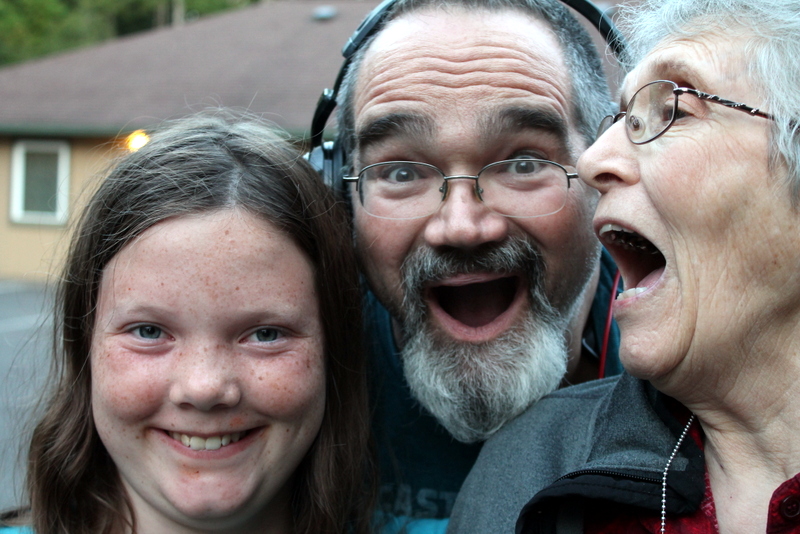
Our reunion adventure started at 4:10 a.m. last Tuesday morning (6/16) when I awoke Lance, noticed that his hair was all over his head, realized that giving him a haircut had not made the day before’s to-do-list, decided that it definitely should have been on the to-do-list, and got out the clippers. A buzz and a shower later he was ready to go and, within the hour, so was the rest of the family. Off to Zion’s Camp we set.
Last time we went to Zion’s Camp, Lance and I look a long detour along the Columbia River Gorge and it was several U-turns and a stop to ask for directions before we were back on track. Determined not to repeat the previous trip’s mistakes, I brought physical maps with us this time; maps of Utah, Idaho, Oregon, Washington, California and Nevada.
Driving through Washington, the cell phone GPS told us to leave the Interstate in Yakima and get on Hwy 12. Obediently we complied. Soon, but not soon enough to turn back, we found ourselves on a narrow, winding road traveling through Mt. Rainer National Park. It was an incredible scenic drive (the drive along the Columbia River had been scenic also) but it was NOT the most direct route.
I learned something. One must do more than bring maps on trips. It is also necessary to open and read the maps.
Later, rather than sooner, we arrived in Zion’s Camp (Belfair, WA) and it was all good. ALL of it. GOOD. GREAT even.
Except when my shopping cart disappeared….. Prior to the reunion’s official start, my brother Brad, his wife Nikki, Lance and I went to Wal-Mart to pick up a few reunion necessities. Lance and I finished before Brad and Nikki so we sat on stools in the Wal-Mart Subway shop, waiting for them to finish. The shopping cart, filled with our purchases, was parked right next to us. Right next to us. Less than 2 inches from my elbow. The shopping cart WAS parked right next to us when we began our wait. When we ended out wait, it was NOT parked right next to us. In fact, it was no where to be seen.
Flabbergasted, I peeked around the corner and Lance trekked to customer service. Surely the cart was somewhere. But no. It was not. While we were sitting there, right next to the cart, someone took it completely without our knowledge. Resigning ourselves to the fact it was gone and recognizing the fact that we really needed the items we had purchased, we got another cart, and were starting Shopping Excursion Take Two when Brad came back into the store. “I loaded all your stuff into the van,” he said. At that point we were not sure whether we should thank him or thunk him. Though we no longer questioned what happened to our stuff, we are still questioning how he could have taken it without our noticing. Scary.
Mt. Rainer excursions and missing shopping carts aside, the reunion itself was fabulous; filled, for me, with golden moments where time seemed to stand still and now could have lasted forever. I lived, it seemed, totally in the moment, not plagued by life’s usual worries, concerns, and anxious anticipations of what may or may not come next. Glorious. And beautiful.
Framed by a “Secret Service Academy”/military school theme, the activities included a scavenger hunt that took us around the perimeter, a running, swimming, boating tri-athalon, a trip to the Seattle Temple, an excursion to Pike’s Market, several Capture the Flag night games, a couple ending-after-midnight basketball games, a morning on a rope course, an invasive species pulling service project, and church services on Father’s Day where we filled four and a half center aisle pews.
The activities were fine but the people made it fabulous. Present were Mom and Dad Noel, all five of their children and spouses, all but two of their grandchildren (the two who are on LDS missions), both of Dad Noel’s siblings and their spouses, one of Dad Noel’s nephews and his family, and a grandson’s girlfriend. Though I distinguish them here by families, distinct families were indistinguishable at the reunion. Everyone mixed interchangeably; it was truly melting pot where love and acceptance flowed freely.
Following are snippets of my memories that may or may not be interesting to those who were at the reunion and that probably will NOT be interesting to anyone who was not. (Feel free to skip to the bottom.)
Ø Clarisse, Matthew, and Jett (5 yrs and younger) playing crochet or, more accurately, using the crochet set to play some game whose rules they made up that involved using the mallet to push the balls around the lawn.
Ø Romney, Lanae, and Tanah squished into a kayak so tightly that Tanah had to duck when Romney and Lanae paddled.
Ø Kali M volunteering to wash dishes every night.
Ø Putting the scavenger hunt clues out with Eden and then both Eden and I being unable to find the “No Fires Allowed” clue site.
Ø Wright A. being so, SO good with the little boys….except when he dropped Gideon on his head on the cement floor.
Ø Grandad beaming as he baptized all of his 12-18 year old grandchildren in the temple, the grandchildren serving as proxies for his ancestors who had died without the opportunity to get baptized.
Ø Listening to the sealer in the temple tell us that many sacred things happen in the temple, things that are too sacred to be shared without permission…and then sharing, with permission, some personal sacred experiences.
Ø Miles and others complaining about the service project before it started, participating without complaint once it started and then expressing amazement that it was over so quickly.
Ø Ah…the service project! We pulled Scotch’s Broom, an incredibly invasive, aggressive bush in the WA area. Fortuitously it has a very shallow root system so the younger plants are very easily pulled by younger kids and the older ones pull-able by older kids. Those who weren’t pulled hauled and stacked the pulled plants on the trailer. It was a perfect-for-all-ages-and-sizes service project.
Ø James and Miles were BEAST together as they pulled plants.
Ø Romney was BEAST alone as he pulled plants.
Ø Jacob (7 years) never slowed down, bringing plant after plant after plant to the trailer to be stacked.
Ø McKaye was also an incredible worker.
Ø Spencer was a champion jump-on-the-stack-so-we-can-fit-everything-into-the-trailer-er.
Ø The ropes course was phenomenal. I only wish we’d had more time. Memorable were Marjorie’s courage, Aliza’s ideas, and Blaine, Jason, and Romney’s strength as they lifted my inert body over a tall, vertical wall.
Ø Jason’s obvious love for Aliza as he described his feelings when she was the left, the last one to go over the wall.
Ø Every family reunions should have a lake and the Zion’s Camp Lake was perfect.
Ø Miles coached Clarisse in the water, which she loved even though she did not need it.
Ø Kali M was the paddle board queen.
Ø Rachel swimming beside the canoe, towing it back to dock.
Ø Sadie dive bombing off the rope swing into the rocks. (Ouch!)
Ø Esther’s salamander, caught at the lake
Ø Daniel (Bubbah) giving everyone hugs.
Ø Gathering every night at 9 p.m. to read scriptures and then kneel in family prayer. Priceless.
Ø Wright A. and Wright M. catapulting children off the swings in the Swing Garden
Ø Carole chatting with Miles and Harper, intently listening with her adult ears to their child chat.
Ø Wright M. individually chatting. Time after time I saw him one-on-one connecting with cousins. “He is so, SO kind,” said Miles.
Ø McKaye chasing Frank in, around, and through the dorms.
Ø Frank and Gideon rolling hula hoops and giggling and rolling hula hoops and giggling and rolling hula hoops and giggling and ……
Ø Cathy and Kailey hula hooping
Ø Kailey gracefully striking yoga poses….and the rest of us trying to follow (much less gracefully!)
Ø Eric’s to-die-for hummus. (Kimberly has the recipe.)
Ø The fact that Kimberly hates to be called “Kim” but allowed us all to call her Kim.
Ø Aunt Edie’s load of love as she expressed gratitude for all that was happening at the reunion.
Ø Kali M earned 87 participation beads.
Ø Eden crawling up on the counter to wash windows in the boy’s bathroom
Ø Miles and Harper mopping the floor in the dining area.
Ø Cathy’s self-discipline to do school work while the rest of us were playing.
Ø Ashley (younger than 12…) captivating Miles, Spencer, James, and Jacob for 3.5 hours as we drove through traffic from Seattle back to Zion’s Camp. “Tell me about a harsh girl,” she instructed them. And, later, she lectured them. “Back in the day, people were mean to people just because they had black skin but it does not matter if people have black or pink or purple skin. Everyone is important.” No need for electronics when Ashley is in the car.
Ø Kali N. scored three baskets in the pick-up basketball game. It was a victory on many fronts.
Ø Matthew saw the ring pops on Wednesday and asked faithfully every day through Saturday if it were time to eat them yet.
Ø Hamilton’s story about a naked, Japanese massage. (You’ll have to ask him.”
Ø Eric takes three guns with him when he travels. “You never know which gun goes best with which outfit and I like to have options,” he explained.
Ø Larry’s moral to his story about cutting off two of his fingers. “Never use a band saw when you are mad at students.”
Ø Wanda and I cooking rice and chicken together….and rejoicing in amazement and wonder when it all worked out.
Ø Carole bringing Lanae from the airport. Thank you!
Ø Uncle Keith still teases me about writing too much. (He will never make it this far in this letter.)
Ø Nikki participating in a trust game “…only because I know how important it is to Noels to face their fears.”
Ø Nikki, who comes from a strong, wonderful family, saying repeatedly how much she loves being a Noel.. [We love it that you are a Noel too Nikki!!!!]
Ø Marjorie giving me a hug in Relief Society because she can read my heart, even when I have not said anything.
Ø Aliza, McKaye, and Grace hanging out together.
Ø Grace being tackled by three (or was it four?) young, male cousins and wrestling them all to the ground.
Ø Lance, with his best drill sergeant voice, being the perfect MC for the Secret Service Academy. “I hope none of you have dyslexia…”
Ø Gram, still the Momma Bear, watching out for all of her kids and grandkids.
Ø Wright A. and Brad decided to make cinnamon rolls on night just so they could try out the commercial dough mixer….using the wrong sized bowl and showering the kitchen with flour, milk, yeast….find the right bowl and, eventually, making some incredible cinnamon rolls. YUM!
Ø Brad’s Father’s Day pies….Fabulous!
Ø Tanah cleaned the grease trap in the kitchen, easily the week’s nastiest job.
Ø Nikki’s bare feet….ever seen a Hobbit?
Ø Laughing with Blaine…….laughing and laughing and laughing. He has an infectious laugh.
Ø Figuring out the difference between energy and force with Blaine. He also has a great brain.
Ø Marjorie and Kimberly’s side trip to the Costco in Olympia. Kimberly, who loves Costco, is thinking about marketing Costco t-shirts. Costco: SEATTLE. Costco: OGDEN. Costco: PORTLAND. Contact her for details.
Ø The teens girls, stopped in traffic near Pike’s Market, jumped from the car to get caramel apple samples and ended up charming the shop keeper into bringing the plate of samples to their car window.
Ø Grandad’s breakfast crew—teenagers will not get up for their parents but who willing got up early to help Grandad fix breakfast.
Ø The “Wizard, Elves, Giants” game on the lawn that did not work as planned but that did entertain us.
Ø Gram’s “As for me and my house, we will serve the Lord” plaques.
Ø All the men wearing matching purple ties to church.
Ø Uncle Keith’s famous fry bread. [I would write more about it but he will never, NEVER make it this far in this letter.]
Ø “Is puberty hard, Aunt Teresa?”….an innocent question asked by a favorite niece.
The scriptures say that time is measured to man only, that God is timeless. God, it seems, is completely present, totally in the moment. I think, perhaps, during the family reunion, I experienced a small taste of what God experiences. Totally in the moment, surrounded by family, it certainly seemed like heaven.
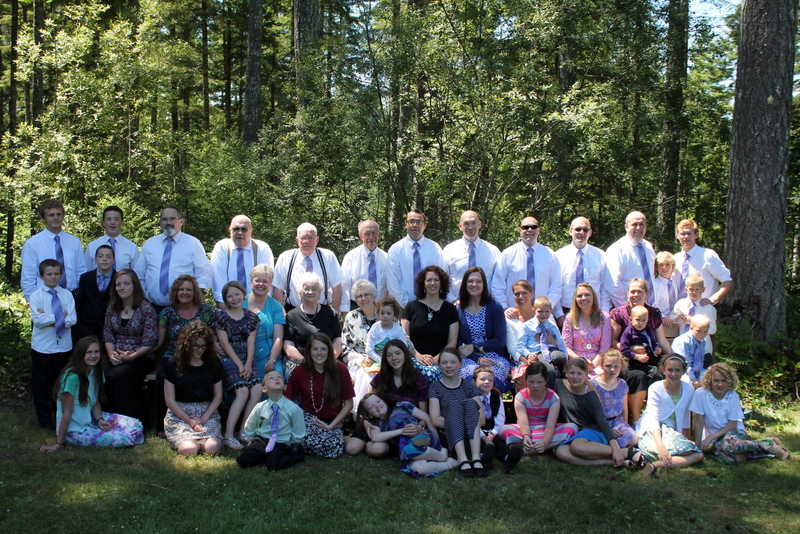
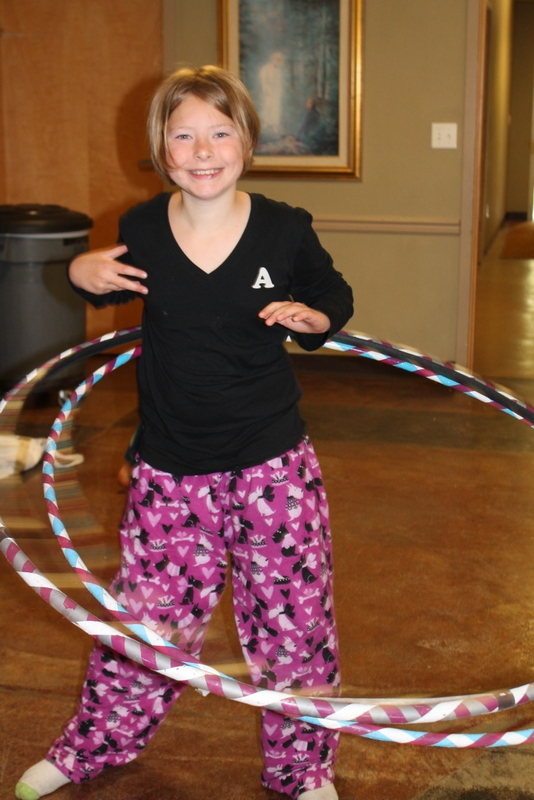
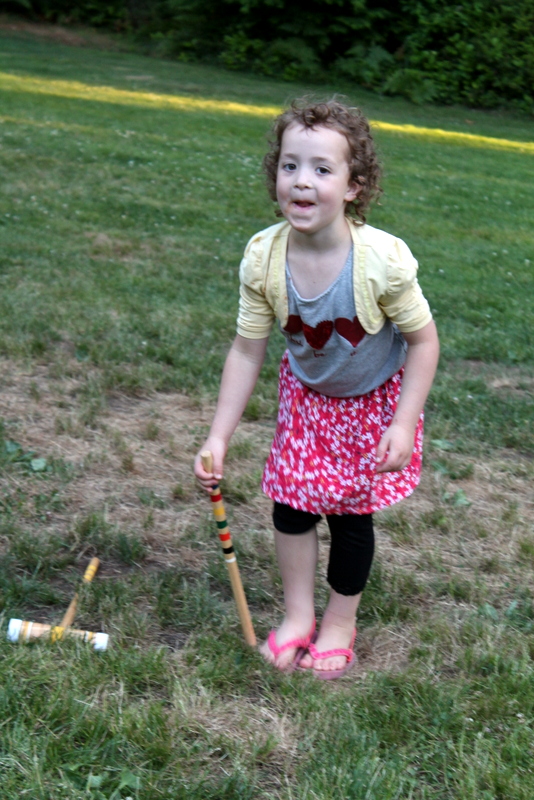
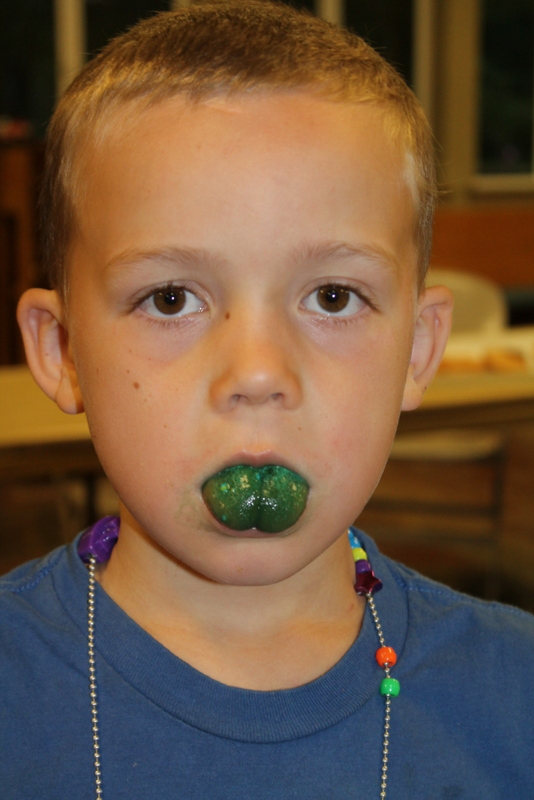
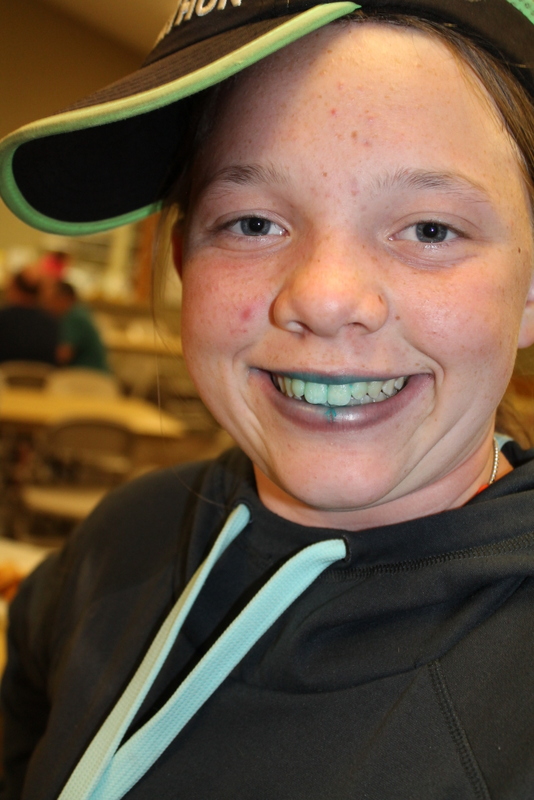
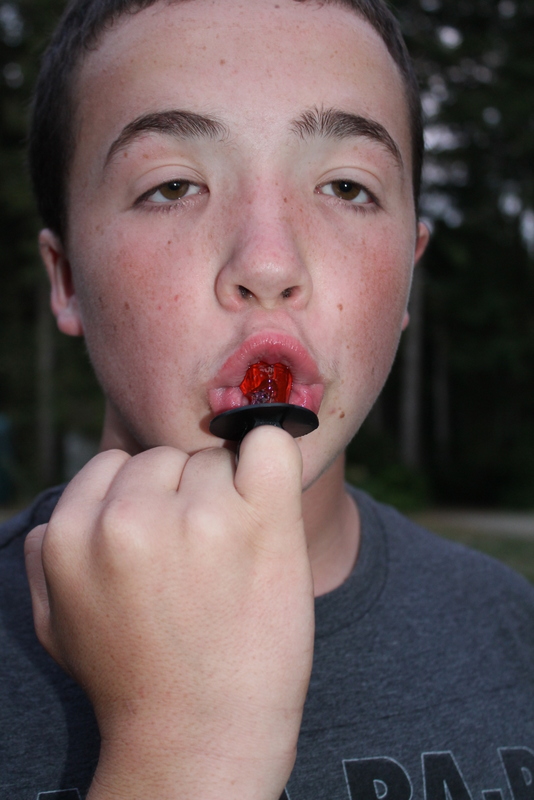
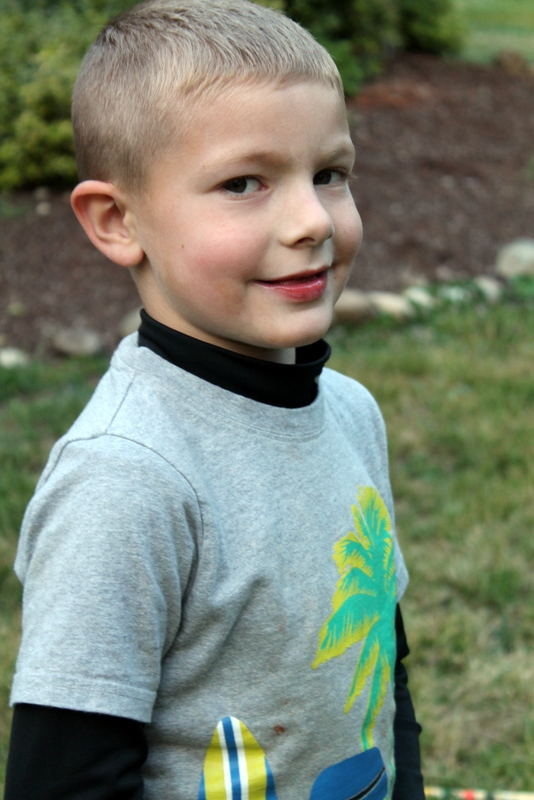
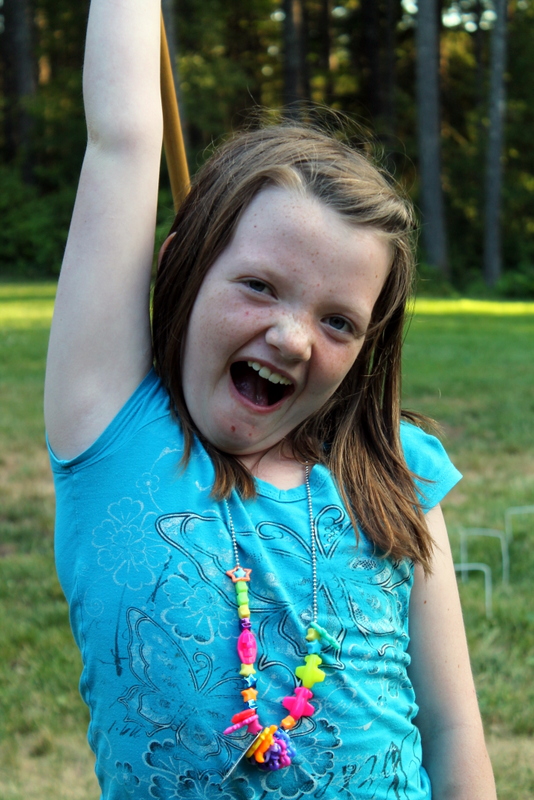
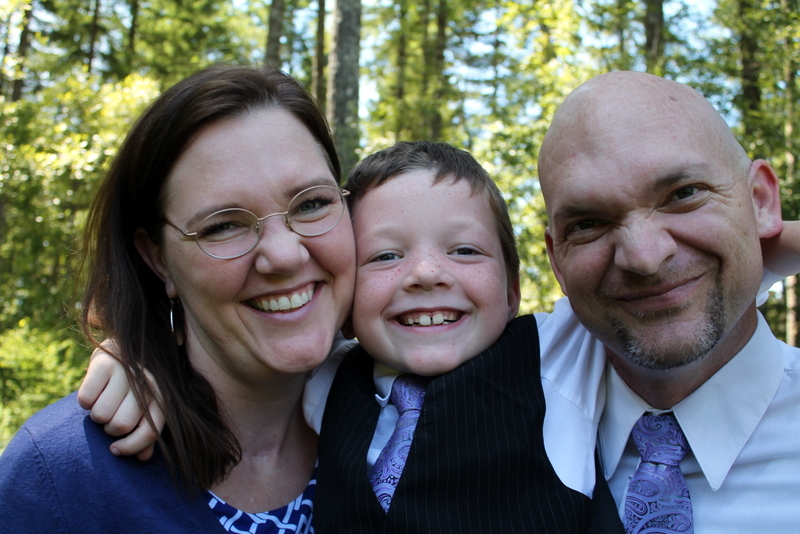
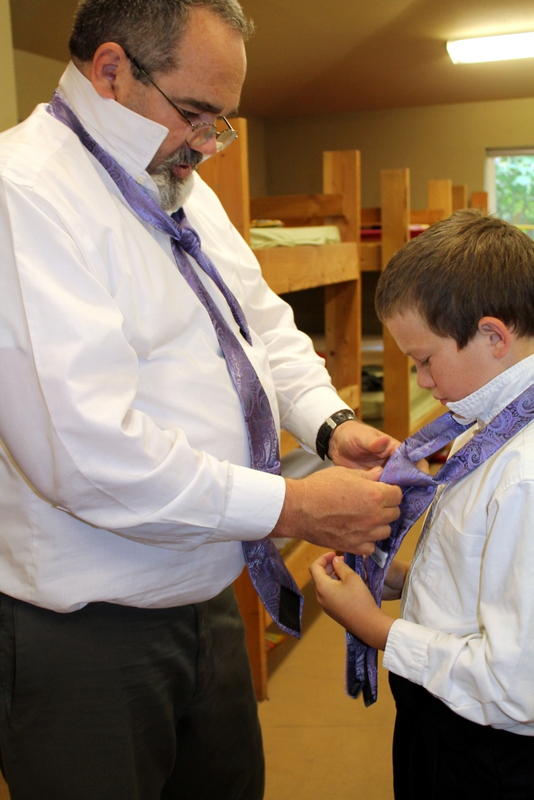
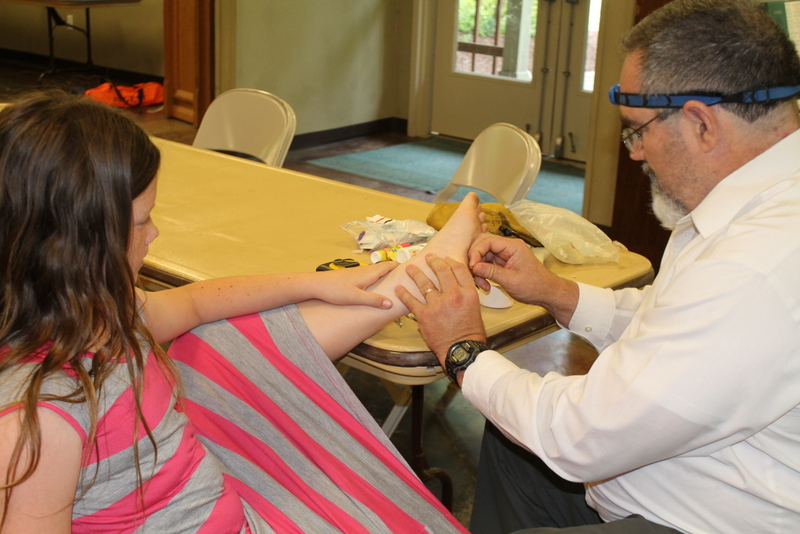
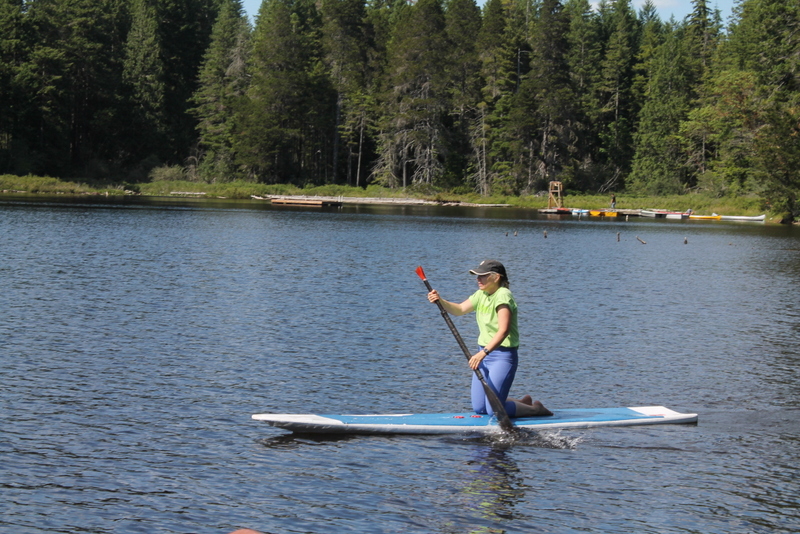
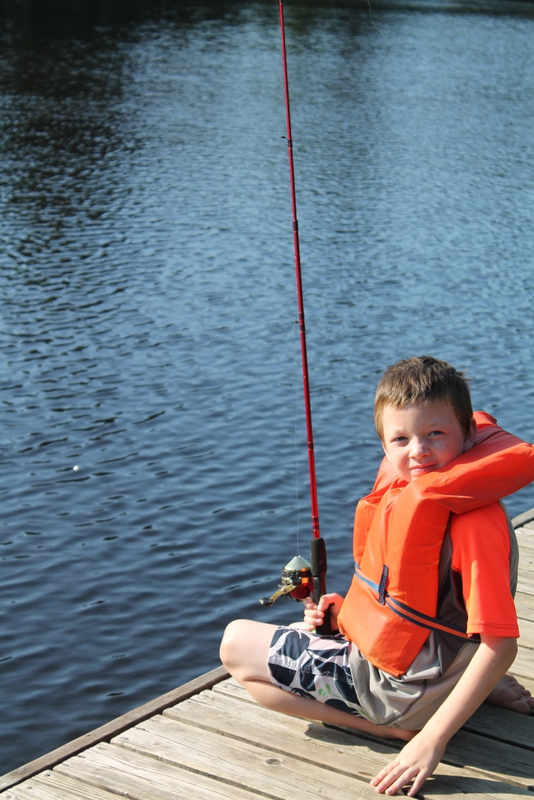
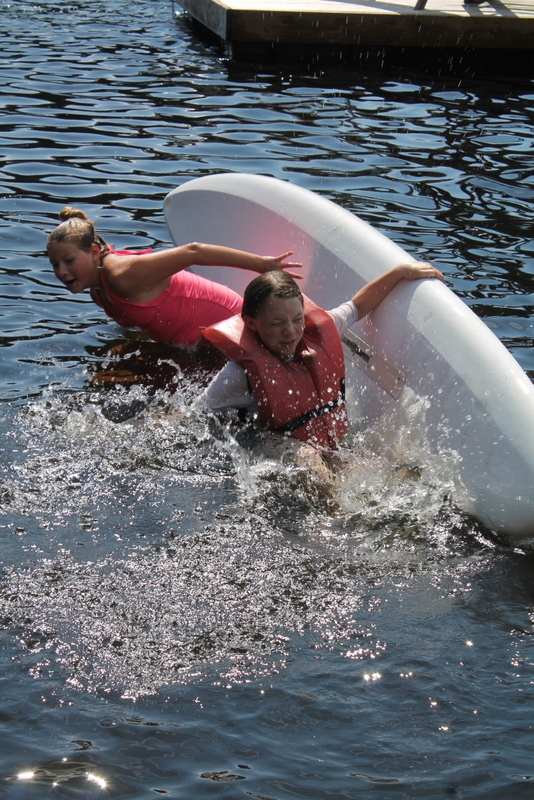

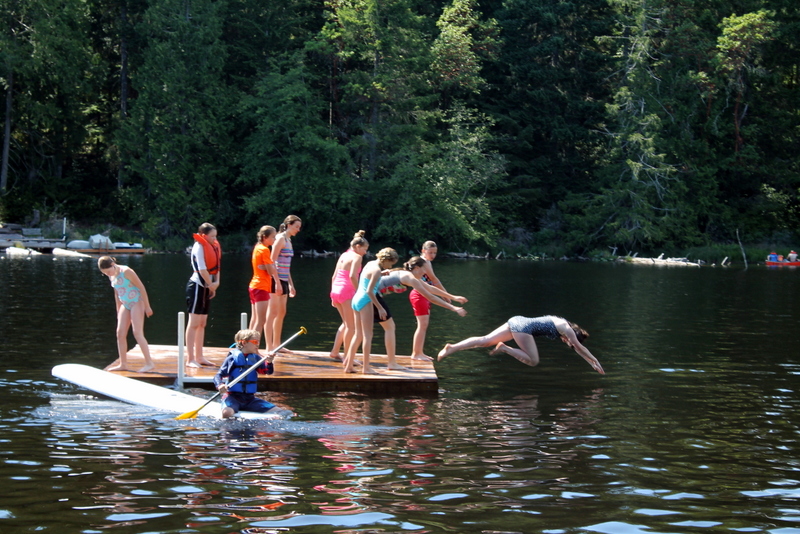
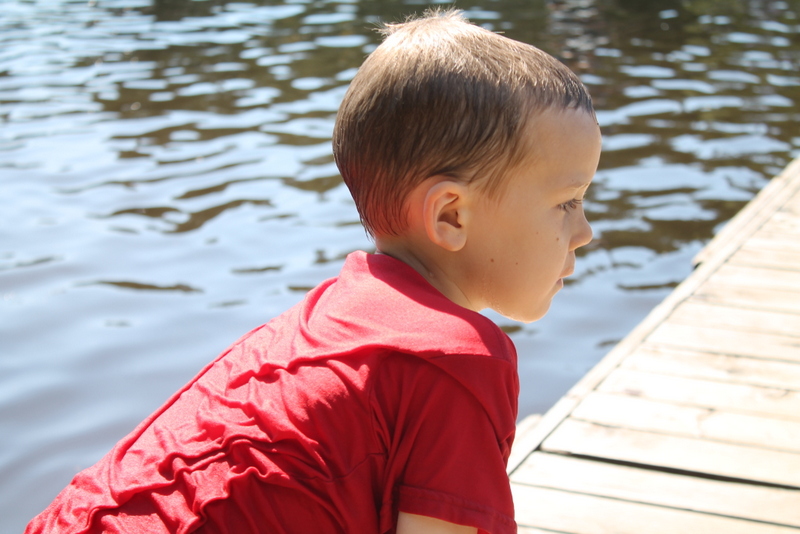


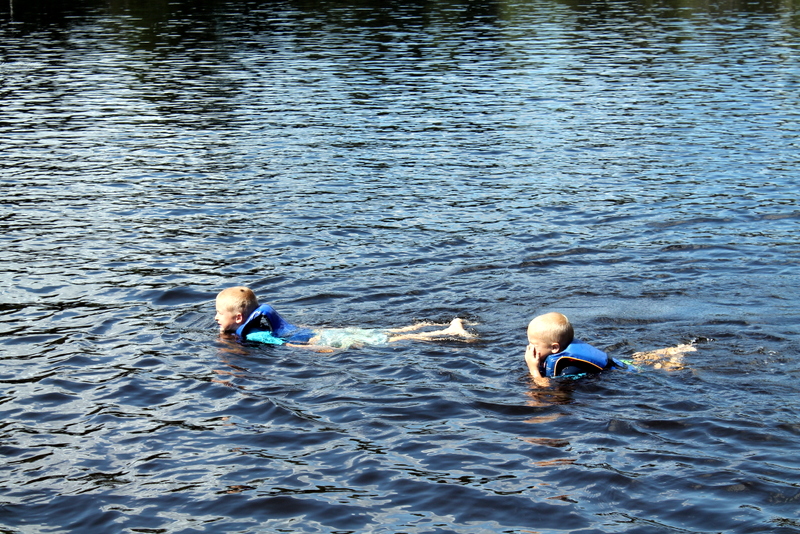

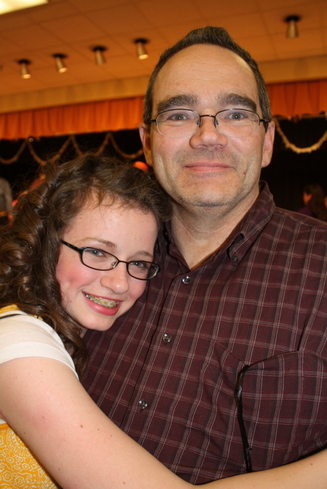
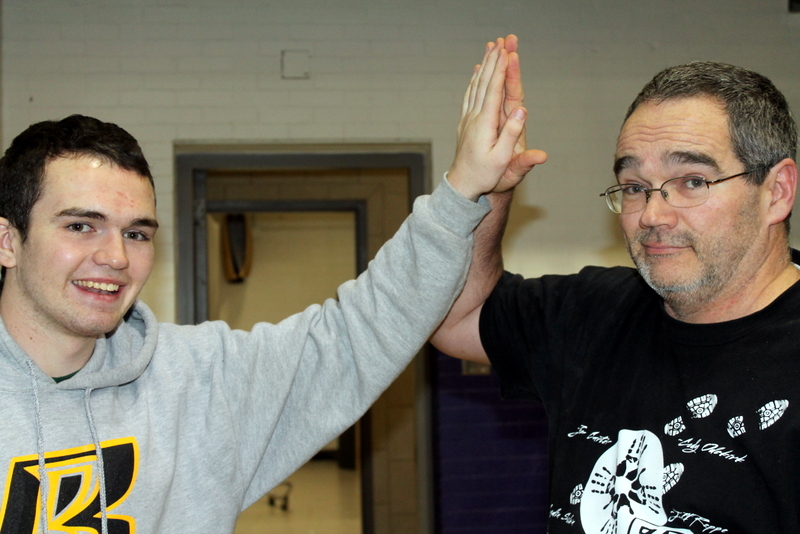
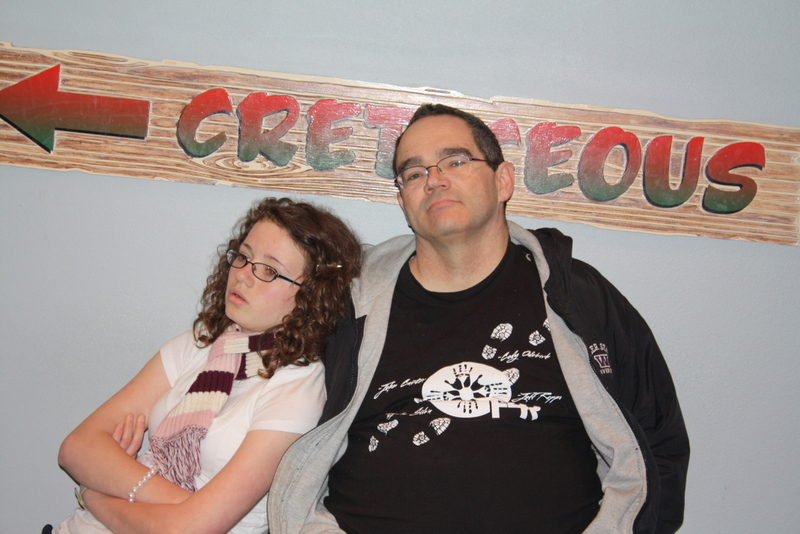
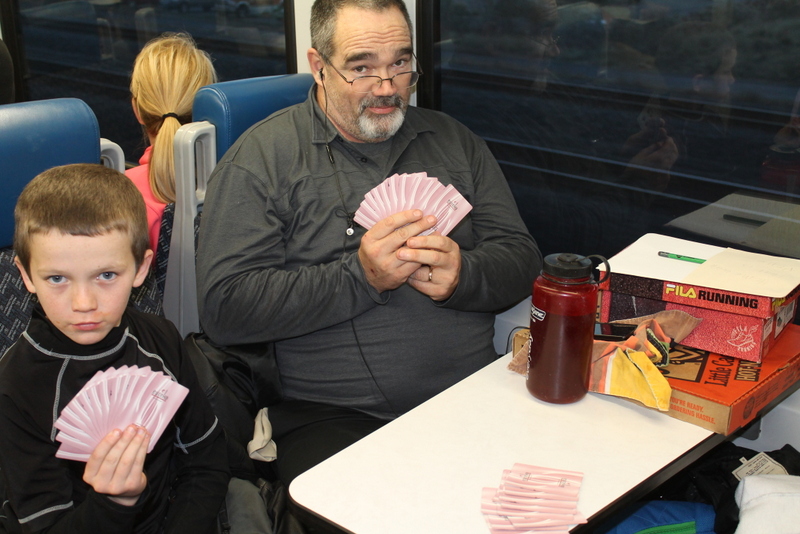
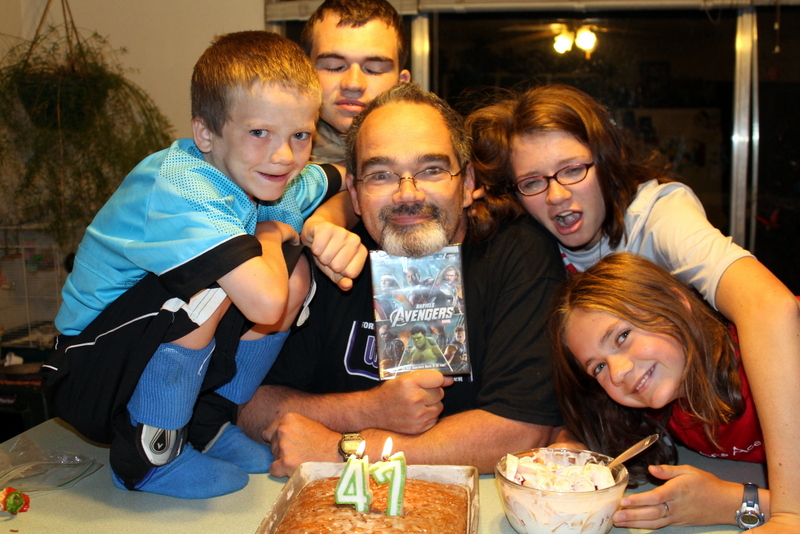
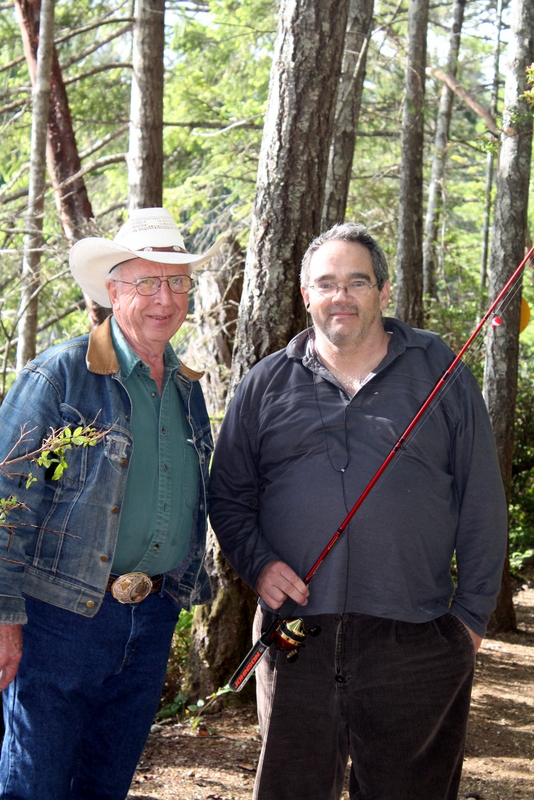
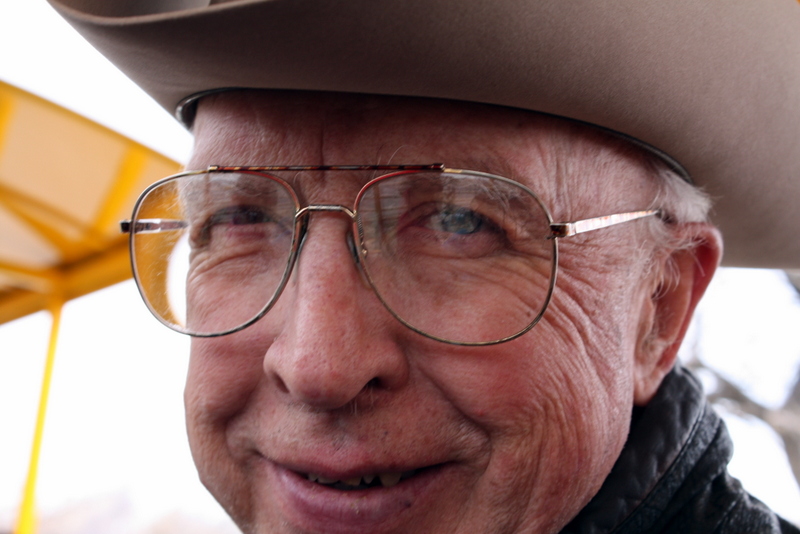
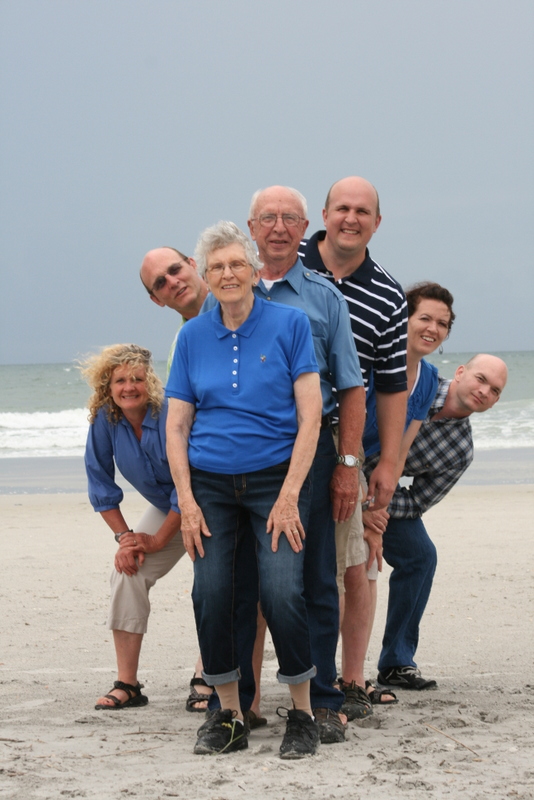
 RSS Feed
RSS Feed
